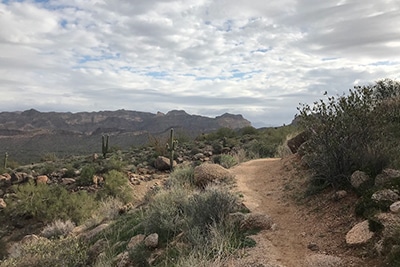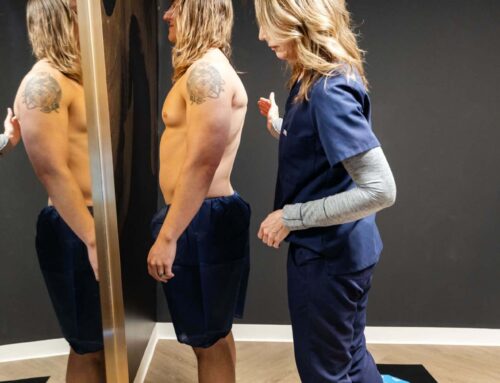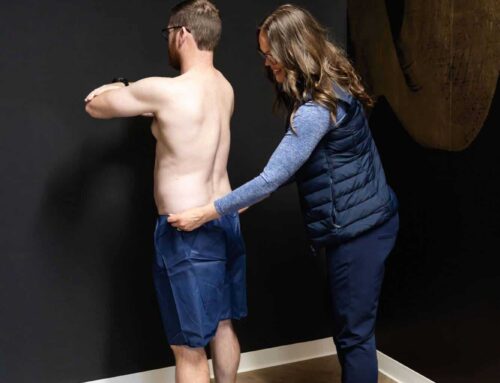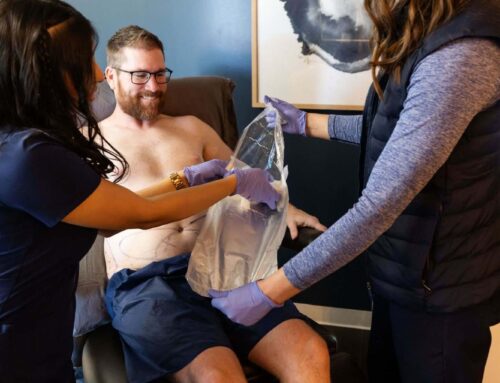 There’s nothing quite like Arizona’s great outdoors. It’s no wonder our natural beauty beckons locals and visitors alike to lace up their boots and hit the trails. But hiking in Arizona isn’t all fun and games. The desert can be dangerous, especially if you’re not prepared. You need to be focused on safe Arizona hiking to create the good kind of memories of the desert.
There’s nothing quite like Arizona’s great outdoors. It’s no wonder our natural beauty beckons locals and visitors alike to lace up their boots and hit the trails. But hiking in Arizona isn’t all fun and games. The desert can be dangerous, especially if you’re not prepared. You need to be focused on safe Arizona hiking to create the good kind of memories of the desert.
Safe Arizona Hiking Tips
You undoubtedly know some of the standard safe hiking tips, including wearing the right shoes and having appropriate gear for your travels. But Arizona offers some unique challenges you won’t find on the trails of Montana (and vice versa, of course!). Here are some of the big things you need to know to ensure a day of safe Arizona hiking.
1. Stay Hydrated
Your #1 priority while hiking is to avoid dehydration. This danger can sneak up on you! Dehydration can zap your energy, cause muscle cramps, and put you at risk for heat stroke. So how much water do you need? The general rule is 8 to 10 ounces of water per mile, which is 24 to 40 ounces an hour. If your hike will be a tough one, or the temps are soaring, double it. For safe Arizona hiking, it’s always best to err on the side of caution and bring more water than you think you’ll need. It’s also critical to drink before you start feeling thirsty.
2. Pre-Hydrate
Yes, you can kickstart your hiking hydration! Drink up before you head out, and stick to water. Start with 17 to 20 ounces about 2 to 3 hours before you leave, and at least another 8 ounces about 20 to 30 minutes before you hit the trail. Also, avoid coffee, tea, and soda before your hike, all of which can add to dehydration.
3. Stay Cool
On Arizona’s hottest days, it’s best to plan a hike on shaded trails where you can escape the heat and direct sunlight. Check out the trail before you go on a site such as AllTrails, since they suggest the best seasons for that location.
Another good idea is to head into the mountains, where it’s typically 10–20 degrees cooler. Remember: As elevation goes up, temps come down. And if you’re hiking near a creek or other natural water source, you can always wade—or jump—in to cool off.
4. Go Early
During winters in Arizona, you can hike pretty much any time of day or night. But as the temperatures start to increase, consider getting on the trails early. Some hikers will start at dawn or head out later to finish their hikes at dusk. While some diehard hikers will hike at 3 pm regardless of the season, if you’re not conditioned for that kind of heat, you’re best off sticking to early-morning or early-evening jaunts.
5. Take Breaks
New to hiking? You can last longer with fewer after effects when you work breaks into your routine. Plan a short 5- to 7-minute break every 30 to 60 minutes, to remove the metabolic waste from your legs that builds up while you hike. Sit down and prop your legs above your heart to let gravity do its job.
6. Get Salty
During desert hiking, your body needs to replenish its electrolytes. Pack salty snacks and some sports drinks (in addition to your water) to help you replace those lost electrolytes. Electrolytes—which include sodium, calcium, potassium, chlorine, phosphate, and magnesium—are critical to body function and will keep your nerves, muscles, heart, and brain in good shape during your hike. Energy foods and drinks can also be good choices for fueling up with electrolytes as well as the protein, carbs, and fat you’ll also need on the trail.
7. Make Smart Choices
While it’s always a smart idea to hike with a buddy, it’s not always feasible, especially when you’re heading for a 5 am hike on a Thursday morning and all your friends are night owls. If you have a dog, they can be a great companion on the trail in lieu of a human partner. When you don’t have a friend—furry or otherwise—be sure to let someone know where you’re going, which trails you’re taking, and when you might be home. That way, should you not arrive as expected, they’ll know to send out the search party.
8. Be Prepared for Desert Dangers
The desert has two things hikers hope they don’t have to deal with: spikes and snakes. Experienced hikers keep pliers and a fine-toothed comb in their packs to help remove spikes and cactus needles. And for snakes, just stay aware. Rattlesnakes are common in the desert, so watch where you’re stepping, stay on trails, and when you do encounter a rattler, give it space.
Bodify Supports Your Active Lifestyle
If you’re the kind of person who enjoys hiking and getting outdoors, you’re also the kind of person who is a great candidate for CoolSculpting. That’s because CoolSculpting is perfect for people who are close to their ideal weight goal and just need a little help. Plus, since there’s no down time, you can get a treatment and then head right to the hiking trail.
We invite you to learn more about how Bodify supports your active lifestyle by scheduling your initial consultation. We promise no rattlesnakes in our office.






